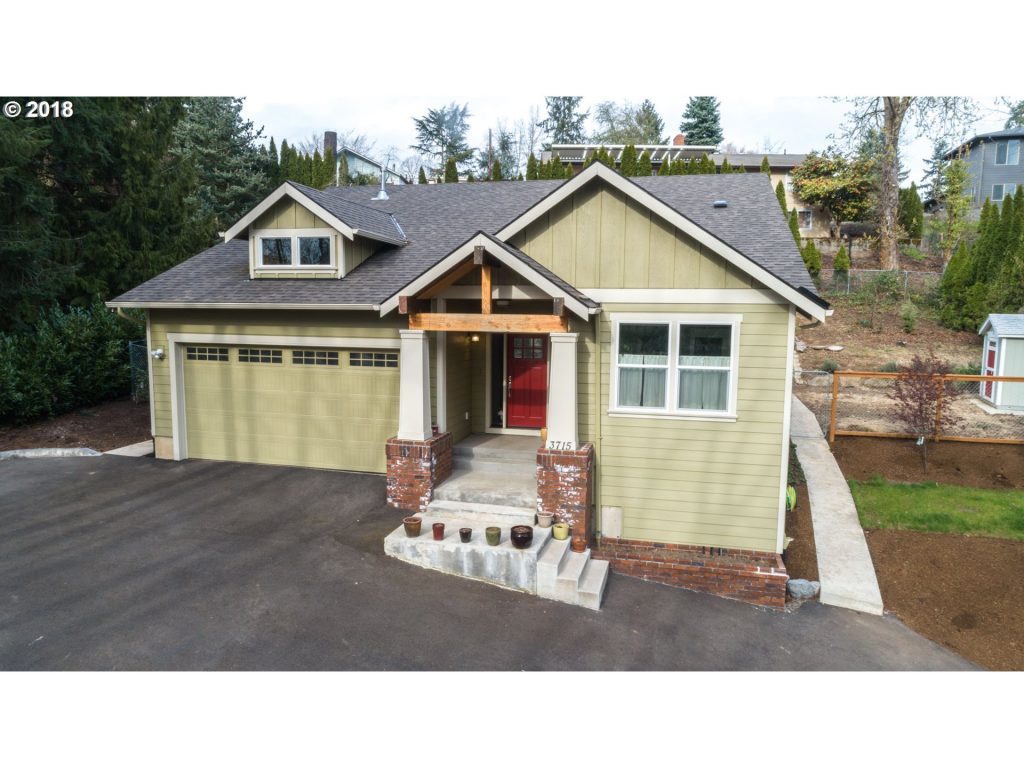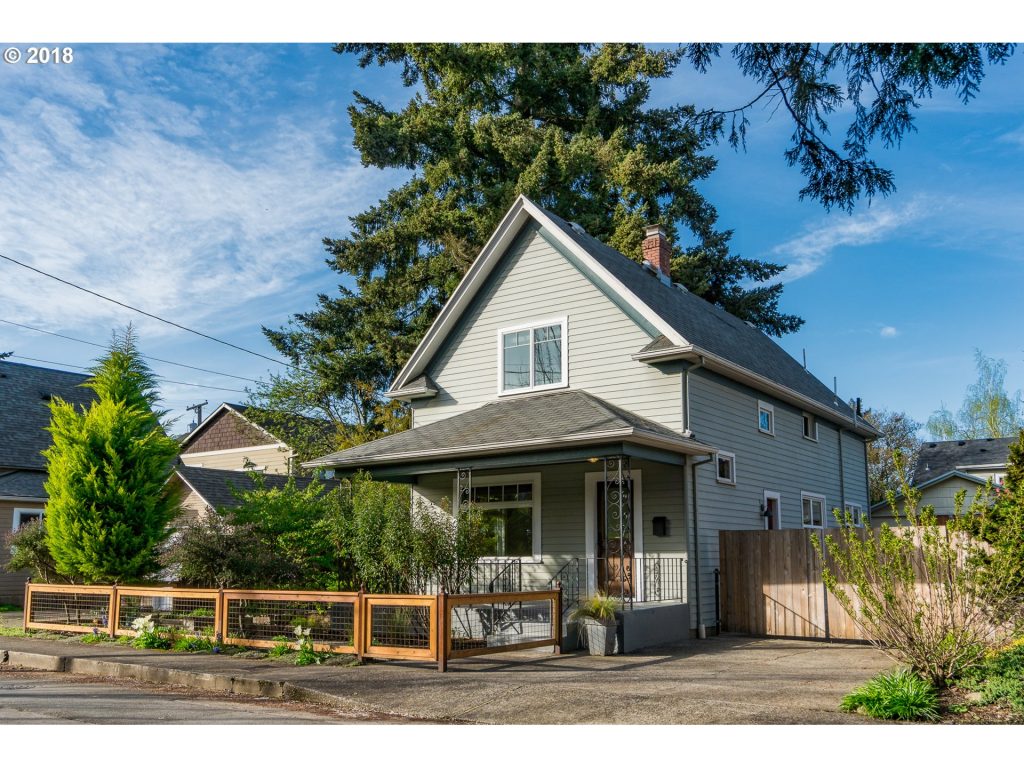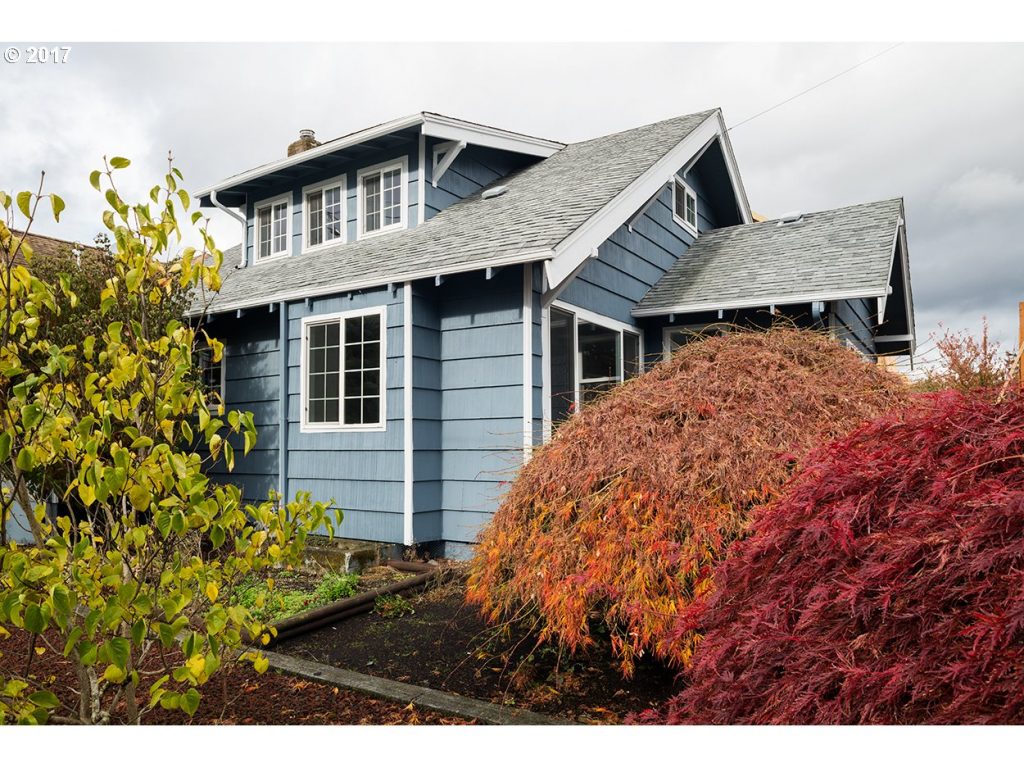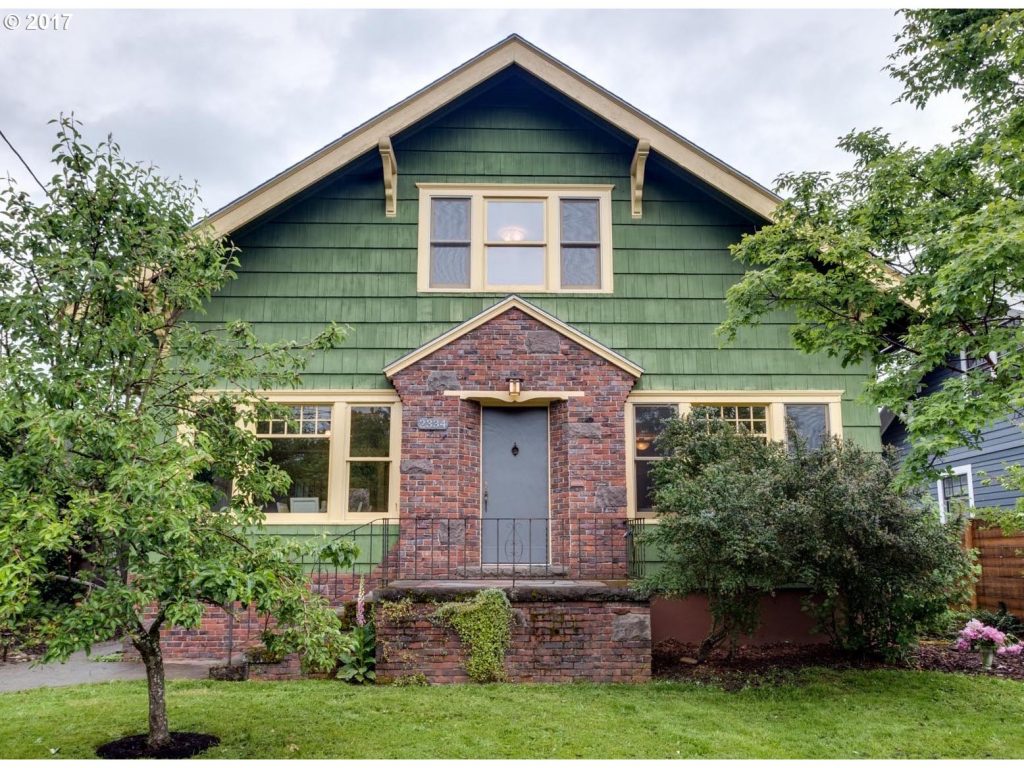Collaboration, creativity, sustainability, and integrity. These are the four principles guiding Colorhouse paint, a local, independent paint company with a unique mission: to make the world more colorful and less volatile.
Colorhouse was founded in 2005 by Virginia Young and Janie Lowe, two artists who had originally started a business called YOLO Paints. They spent all day in rooms thick with fumes from the paints they were using, and were coming home at the end of the day exhausted, with headaches and sore throats. Their concern over the toxicity of their materials fueled their research into healthier options, which lead to their immersion in Portland’s budding green building community.
At first, they experimented with making their own paints out of rice and other organic materials. The process was interesting from an artistic standpoint, but the product ended up being costly and inconsistent. They started talking to both paint chemists and green chemists about creating a paint that was safe to use, environmentally responsible, and of the highest quality, and so Colorhouse began!
“We really are the first paint company to combine greener paint with beautiful color,” says Puji Sherer, president of Colorhouse and Chief Color Nerd (favorite colorhouse shade: Thrive 0.5, a soft green inspired by the St. Johns bridge.) “It’s not just what’s in the can. Everything we do is from a green perspective.” The can itself is made from recycled materials, with 100% post consumer, chlorine-free labeling. Their headquarters uses renewable energy, and boasts the gold LEED (Leadership in Energy and Environmental Design) rating, as well as numerous other certifications for sustainable formulas and practices.
 When the company first launched, there wasn’t much public knowledge of Volatile Organic Compounds (the toxic chemicals that evaporate out of paint at room temperature, also known as VOCs) and other toxic chemicals found in conventional paint products. Educating consumers on this topic has helped to propel the entire paint industry in a healthier, more sustainable direction.
When the company first launched, there wasn’t much public knowledge of Volatile Organic Compounds (the toxic chemicals that evaporate out of paint at room temperature, also known as VOCs) and other toxic chemicals found in conventional paint products. Educating consumers on this topic has helped to propel the entire paint industry in a healthier, more sustainable direction.
Now, regulations have been created requiring all manufacturers to reduce their VOCs, and safer, greener paint is no longer such a niche product. “It’s awesome that we’ve really helped to change the paint industry. And so now, we’re looking at how we can take this a step farther,” says Puji. “Larger paint companies have either focused only on color or only on the green. For us to combine green and color with the high quality paint has been our biggest success.”
Puji moved to Portland in her early twenties, after graduating college with a B.F.A. in painting and ceramics. She jokes that it was after moving that she realized she might not have gotten the most practical degree, and started wondering what she was actually going to do with it. “I distilled down the thing that I’m most passionate about, and it’s color. And the most practical application of color in our lives is paint!”
She started apprenticing with a local paint contractor to learn more about coatings, technique, and interior design. Inside people’s homes, she’d analyze the colors they picked, and why it was or wasn’t working with the space. From there, she moved on to doing color consulting on her own. That’s when she met the founders of Colorhouse and became their first employee. “They brought me in, and I’ve been here ever since!”
Throughout her time with the company, Puji has been involved in sales, customer service, marketing, sample production, color trend forecasting, and more. As Chief Color Nerd, her current focus is on developing new colors and palettes, often in collaboration with other local businesses.

For this process, the business they’re partnering with will put together a general mood board, featuring a selection of photos, items, pantone chips, and paint colors from other companies. From there, Puji uses her artist’s eye to relate those colors to existing Colorhouse shades that are working well, and create some new samples.
Paint samples are created in a machine that adds up to twelve different pigments one drop at a time to a quart of base, then mixes everything up. The software Puji uses breaks everything down into a color formulation, that can be fine tuned to perfect every hue. “There are a lot of colors that don’t make it,” Puji says, flipping through a stack of rejected swatches. “They can be too boring, too muddy, too peachy, too golden. I come more from an artist’s background so I really had to train myself to do all the careful records in the accounts.”
Eventually, the colors are narrowed down into a palette for their collaborators, who make the final selections. This overall creative process can take about ninety days before production even starts on a new color.
Colorhouse paint can be found all over town. Nedd Ludd, a craft kitchen in Northeast Portland, was painted in the morning, and was open again, serving dinner to the public that very evening. Bee Local, an artisan honey company, needed a paint for their beehives with a clean formula that wouldn’t be harmful to the occupants. This inspired Colorhouse’s beeswax palette: a collection of warm, earthy yellows and tans.
They have teamed up with Pendleton, Revolution Designhouse, the Joinery, the Land of Nod, and many others. They’re always working on diversifying their color collaborations, and will soon be releasing some exclusive palettes for One King’s Lane, an online home decor company.
When creating a new color for their own line, a lot of what Puji looks at is fashion, which can help forecast color trends. She also draws inspiration from travel, and from visiting new restaurants that pop up around town. The colors are intentionally designed to be timeless backdrops for living.
“We try to simplify the color choosing process, because a lot of those colors in typical paint stores don’t really look that good when they’re up on your wall.” Unlike other paint centers, the colors are curated, making the selection process less overwhelming. Puji and the Colorhouse team believe that painting a home should be fun, and have striven to remove all obstacles to that. “There’s the painting part, where if you have a low quality product, it makes that process even more painful because you’re doing so many coats. When you open up a can of Colorhouse you can really tell the difference in the quality of the product. It’s how it levels, the coverage that you get, how it flows.”
Painting a home is one of the biggest ways to transform it, and it’s also the most affordable. “We design our colors in a way that makes it so you don’t have to be afraid of adding colors. Don’t just go with the standard white everywhere. Color offers the opportunity to express yourself and your individual style. It’s a really cool creative outlet!”

In addition to its four main principles, the brand offers an accessibility that you can’t find elsewhere. Their headquarters, warehouse, and showroom share a building in Northeast Portland. Sun streams through their front window, illuminating the neatly organized paint samples in their cozy storefront. From behind a desk, Puji’s dog Goose, the vice president of morale, (favorite colorhouse shade: Thrive .03, an exact match to his tennis ball) taps his tail in lazy greeting. They do all the DIY projects and photoshoots for their website right there, in the warehouse, without hiring bloggers or influencers to do it for them. Colorhouse is a company made for (and by) passionate people, who together are making the world more colorful, and less volatile.
“We are inspired by color and creativity and we want to share that,” Puji says. “And I think that that translates to people.”











 I asked Justin how he convinces people that their house will show better and they’ll get higher offers if they hire a home stager? Wrong question. Justin’s principle is “we don’t sell, we educate.” The analogy he uses is that if you walk into a Gap store, you’re willing to pay more for the crisply ironed and folded shirt than you are the one crumpled up in the corner. There’s a buyer for both shirts, but the buyer of the crumpled shirt wants a bargain, while the person buying the nicely ironed shirt is willing to pay full price. Spade & Archer is not selling the crumpled shirt. One of their recent properties went for $340,000 over asking, the highest amount ever in Seattle’s history. So the ultimate problem is not convincing people that staging works, because it’s pretty apparent that it does, but convincing people that they are not the client. Homeowners like to give their opinion of what they like and don’t like but Justin (nicely) tells them that, ultimately, of all the people in the world who are going to buy the house, they are not one of them. Instead, Spade & Archer is really
I asked Justin how he convinces people that their house will show better and they’ll get higher offers if they hire a home stager? Wrong question. Justin’s principle is “we don’t sell, we educate.” The analogy he uses is that if you walk into a Gap store, you’re willing to pay more for the crisply ironed and folded shirt than you are the one crumpled up in the corner. There’s a buyer for both shirts, but the buyer of the crumpled shirt wants a bargain, while the person buying the nicely ironed shirt is willing to pay full price. Spade & Archer is not selling the crumpled shirt. One of their recent properties went for $340,000 over asking, the highest amount ever in Seattle’s history. So the ultimate problem is not convincing people that staging works, because it’s pretty apparent that it does, but convincing people that they are not the client. Homeowners like to give their opinion of what they like and don’t like but Justin (nicely) tells them that, ultimately, of all the people in the world who are going to buy the house, they are not one of them. Instead, Spade & Archer is really  They average about 80-90 houses at any given time in the summer, and 40 in the winter. There are six houses staged each week in each office, and six houses that are de-staged every week. They work four 10-hour days per week, starting at 7:15am. Trucks are loaded and ready to go by 8:30-9am. They go out and stage, come back, put everything away and might pull some things for the next project day and they’re done by 6pm. The crews have it down to a science at this point.
They average about 80-90 houses at any given time in the summer, and 40 in the winter. There are six houses staged each week in each office, and six houses that are de-staged every week. They work four 10-hour days per week, starting at 7:15am. Trucks are loaded and ready to go by 8:30-9am. They go out and stage, come back, put everything away and might pull some things for the next project day and they’re done by 6pm. The crews have it down to a science at this point. The Next Adventure apartment looks like it’s been gleaned from a Wes Anderson movie set. This look is not “standard” Spade & Archer, which according to Justin, “acts mostly as a backup dancer as opposed to the headliner.” In the case of the Next Adventure apartment the client needed more because the apartment was both dark, small and outdated, with metallic wallpaper and grasscloth everywhere. Justin’s team treated the project like a concept car, not something that people are going to drive around but that everyone wants a chance to sit in. Everything that Spade & Archer put into the apartment was purchased specifically for the project, which gave them a chance to try new ideas and break their rules a little bit. The recent tenants were a young hipster couple with a little kid so they decided to design for them. Their concept was that the apartment was like a cabin on a cruise ship, a place where you store things and sleep. During the day you go on fabulous adventures and come back at night to recuperate before your next day of exploring. The family would use the apartment as a landing base before embarking on their next adventure. There’s a map with pins in all the places they’ve traveled, photos of the family surfing, the couple’s bedroom is an apres-ski love den, and the kids’ backpacks are at the ready above their beds. They’re doing what everyone else wants to be doing. “We make people feel like they can be that family, even if it’s just for 7 minutes, just long enough to make an offer,” says Justin.
The Next Adventure apartment looks like it’s been gleaned from a Wes Anderson movie set. This look is not “standard” Spade & Archer, which according to Justin, “acts mostly as a backup dancer as opposed to the headliner.” In the case of the Next Adventure apartment the client needed more because the apartment was both dark, small and outdated, with metallic wallpaper and grasscloth everywhere. Justin’s team treated the project like a concept car, not something that people are going to drive around but that everyone wants a chance to sit in. Everything that Spade & Archer put into the apartment was purchased specifically for the project, which gave them a chance to try new ideas and break their rules a little bit. The recent tenants were a young hipster couple with a little kid so they decided to design for them. Their concept was that the apartment was like a cabin on a cruise ship, a place where you store things and sleep. During the day you go on fabulous adventures and come back at night to recuperate before your next day of exploring. The family would use the apartment as a landing base before embarking on their next adventure. There’s a map with pins in all the places they’ve traveled, photos of the family surfing, the couple’s bedroom is an apres-ski love den, and the kids’ backpacks are at the ready above their beds. They’re doing what everyone else wants to be doing. “We make people feel like they can be that family, even if it’s just for 7 minutes, just long enough to make an offer,” says Justin. What are your favorite sources for design inspiration?
What are your favorite sources for design inspiration?




 When the company first launched, there wasn’t much public knowledge of Volatile Organic Compounds (the toxic chemicals that evaporate out of paint at room temperature, also known as VOCs) and other toxic chemicals found in conventional paint products. Educating consumers on this topic has helped to propel the entire paint industry in a healthier, more sustainable direction.
When the company first launched, there wasn’t much public knowledge of Volatile Organic Compounds (the toxic chemicals that evaporate out of paint at room temperature, also known as VOCs) and other toxic chemicals found in conventional paint products. Educating consumers on this topic has helped to propel the entire paint industry in a healthier, more sustainable direction.







 The project will accommodate 1700 students. This number is specified by the district in the Educational Specifications for all new and modernized PPS high schools. The increase in student population is anticipated to grow and the new campus will add room for an additional 200-300 students.
The project will accommodate 1700 students. This number is specified by the district in the Educational Specifications for all new and modernized PPS high schools. The increase in student population is anticipated to grow and the new campus will add room for an additional 200-300 students.